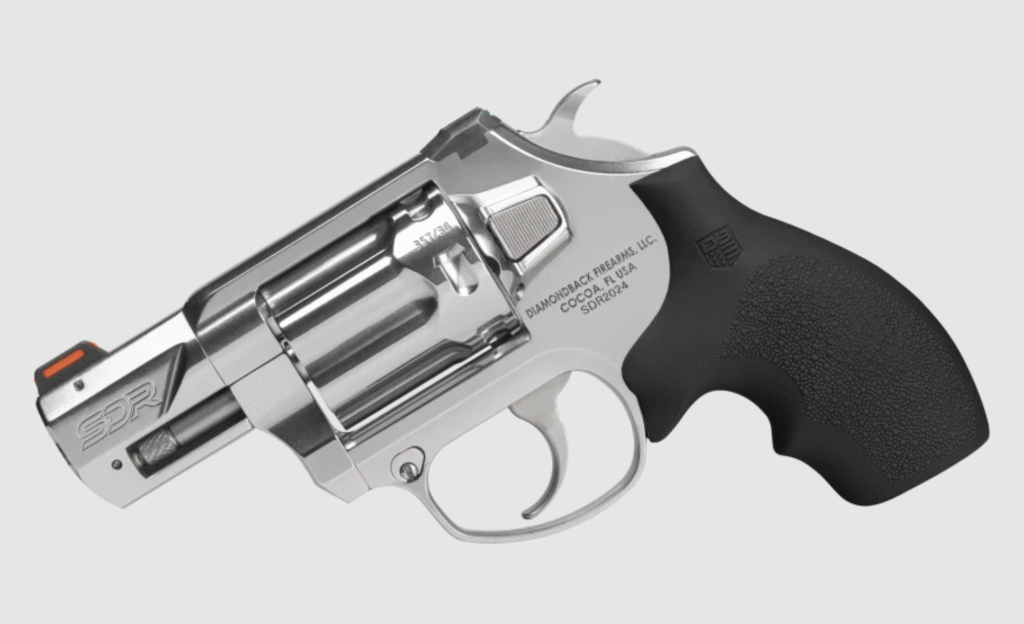Midday
(Continued from Training With Green Ops: Defensive Kalashnikov Part 1)
Once we finished the discussion of zeroes and offsets for the Kalashnikov, we moved on to AK-specific weapon manipulations, including engaging and disengaging the safety with both the right and left hands and reloads. Because all but one student had 7.62x39mm AKs, there was also some discussion about the mechanics of shooting a Kalashnikov robustly and a reminder that these rifles aren’t like ARs. If you don’t drive it, it will drive you and push you around.
Dale described them as “.308 lites” in a sense, in reference to 7.62x51mm NATO chambered semi-autos like the FN SCAR-17 or the M-110. The AK’s long-stroke piston and conjoined massive bolt carrier throw a lot of mass back and forth during shooting. As a result, they do require more deliberateness to handle compared to a typical 5.56mm AR.
Advertisement — Continue Reading Below
During this portion of the class, students received ample opportunities to do safety and reloading manipulation reps. Both instructors showed us various ways to reload AKs without declaring one way to be better or worse than another. They encouraged students to experiment and see for themselves what best worked for them.

Practicing Safe Handling
During this part of the class, we students also doubled down on dry-fire reps for a few minutes on the firing line. Because of it, we were able to instantly shave off fractions of seconds on the first shot from the ready position.
Advertisement — Continue Reading Below
We were taught that despite how un-ergonomic or awkward the Kalashnikov safety is, there’s no excuse for not regularly using it. It’s business as usual, just like any other defensive carbine. The stakes are too high to ignore the safety of a modern rifle, regardless of make and model. Manipulating an AK safety may be slower, but it’s not that slow, either.
With some practice, most of the students, including myself, could get a shot on target from the ready in about 0.80 seconds; I’m also left-handed. When switching magazines on an AR-15, it’s best practice to engage the safety first. The Kalashnikov doesn’t work that way, so it’s an exception because it’s physically impossible to charge the weapon with the safety engaged. Otherwise, the safety gets engaged or disengaged as usual.
Afternoon/End Of Class
After taking a nice shaded lunch and some respite from the hot, harsh sun, the class carried on with its newfound points on Kalashnikov manipulation and shot some exercises and drills—many with the use of a timer. Between the hot sun and the volume of rounds fired through this part of the class, the glove(s) on the support hand proved to be priceless.
Advertisement — Continue Reading Below
The afternoon also afforded us chances to do some barricade work and shoot at C-zone-sized steel at a distance of 40 yards. In spite of the 7.62×39’s less-than-stellar ballistics, those slugs did smack around those steel plates with some authority. It was very noticeable as everyone took turns shooting around and through the V-Tac barricade.
If anything, it did provide an effective demonstration of what these firearms can do at closer distances—especially with a good bullet such as the Hornady 7.62x39mm 123-grain SST or the Barnes TSX.
Green Ops Carbine Standards

Advertisement — Continue Reading Below
It’s customary for Green Ops classes to close with some type of culminating event or a chance for students to shoot Green Ops’ official relevant standards pertinent to the subject (e.g., handgun, shotgun, rifle, etc.).
In the case of the Defensive Kalashnikov class, there are no AK-specific standards, so students ran with the regular Green Ops Carbine standards. No one, including both instructors, was able to clear the standards (designed around the AR) with their AKs, save for a few of the individual challenges. Some of the runs were close, however.
Even with an aggressive effort, I didn’t fare too well either because I wasn’t controlling my AK as well as I needed to. Overall, it wouldn’t take a genius to determine that meeting some of those par times with a heavier recoiling rifle that physically takes longer to reload would just make the standards more difficult to attain. Honestly? Those are still good standards to strive for and, with dedicated practice, still attainable.
Advertisement — Continue Reading Below
Maybe Green Ops can decide to add another 1.0 – 1.5 seconds (whatever is deemed reasonable) for the reloading exercise? Since AK actions do not lock back after the last shot, the instructors stipulated that for #3, students fire their three shots, then fire the fourth shot to hear a click, and then perform the reload.
Listening for the “click” instead of the “bang” is the best real-world reliable indicator that it’s time to reload an AK anyway. In the meantime, striving to meet the current standards still wouldn’t be a bad move.
Drill Results
1: 10 yds, A zone head shot, par time 0.99 seconds (0.86 seconds, missed)
Advertisement — Continue Reading Below
2: 15 yds, 3 shots standing, 3 shots kneeling, par time 4.0 seconds (3.74 seconds, down half)
3: 25 yds, 3 shots, bolt-lock reload, 3 shots, par time 5.5 seconds (6.8 or 6.9 seconds, down half)
4: 25 yds, 6 shots, par time 3.0 seconds (2.35 seconds, down four)
Advertisement — Continue Reading Below















